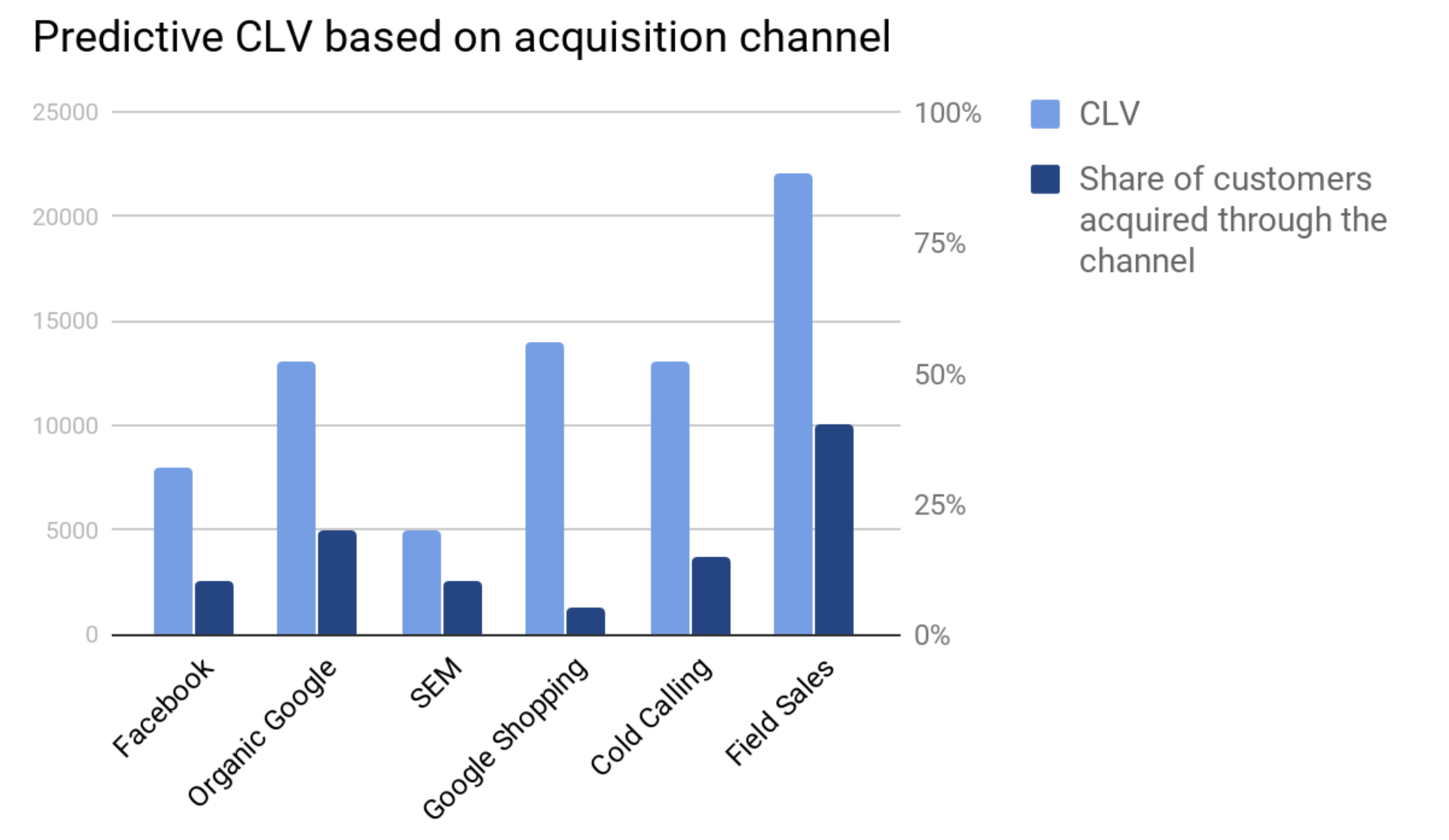The Data Handbook
How to use data to improve your customer journey and get better business outcomes in digital sales. Interviews, use cases, and deep-dives.
Get the book While executing a customer-centric strategy, and acquiring and retaining customers, it’s not enough to merely focus on one group of customers. While it’s true that the business should be optimised based on the customers who bring in most of the profit in the long run, there’s more to the rule than it might sound at first.
While executing a customer-centric strategy, and acquiring and retaining customers, it’s not enough to merely focus on one group of customers. While it’s true that the business should be optimised based on the customers who bring in most of the profit in the long run, there’s more to the rule than it might sound at first.
As the payback time for some of the highly profitable customer relationships might be long due to higher acquisition costs or initial nurturing costs, businesses need other customers who don’t necessarily bring in that much profits in the long run, but whose payback time might be shorter. As different kinds of companies have different customers, different channels should be used to serve each type.
If one thinks about the statement customer-centricity is about optimising the business based on the needs of customers who bring in the most profit in the long run, nowhere does it say that these are the only customers one should focus on — but rather that business should be optimised based on their needs and wants. The means to do so are not clarified in the above statement itself. Suddenly, the whole ethos of focusing only on the best customers sounds very wrong!
To make the most of customer lifetime value (CLV), companies shouldn’t only focus on the best customers and the channels they use. A simple reason for that is that there aren’t usually that many of those best customers. While you should not focus solely on these customers, losing or not acquiring a single one of them will nevertheless be a big hit for the company. Which, intuitively, means that the company’s best efforts should be put into giving everything for acquiring and retaining these customers.
It's OK to have just OK customers
As the search for future best customers is inevitably hard, a company should have additional channels to bring in the kinds of customers that you are merely ok with — and who return the sentiment about your services. They might not buy the most, and they might not turn out to buy that often, or for that long, but they bring in a steady flow of revenue. Your cash flow statement will like these customers. When you think of it, these are the kinds of customers who need help in finding the right products, sometimes return them, but mostly are just ok with your services, and they bring in a small amount of positive net return.
There are [customers] that are not necessarily the right fit for you.
Additionally to the previous two types of customers, there are the ones that are not necessarily the right fit for you. No matter how many retargeted ads, emails, or nurturing care models you target to them, the marketing euros don’t seem to pay off. These customers are not the right fit for your company. Don’t fall into the pit of thinking that every customer will magically move through your state-of-the-art care model and come out as a true brand ambassador from the other side. Sometimes it makes sense to simply acknowledge that some customers aren’t the ones to develop.
Have different channel strategies for different groups of customers
If we use a simplified framework of having three types of customers based on their perceived future value: high, mid, and low-value ones, we can start figuring out the problem of what is the role of different channels in ecommerce. Important here is to understand the potential of some customers becoming high-value over time. The simplified division of customers could look as follows:
High-value customers
- Provide a personalised experience (e.g. with custom storefronts)
- Offer premium value-adding services
- Form trust by systematically executing account management
- Give the customers a voice by creating unique customer communities
Mid-value customers
- Work with traditional customer development activities
- Automate the top part of the funnel
- Incentivise to join loyalty programs to add value
- Personalised, well thought-out discount marketing automation campaigns
Low-value customers
- Automate most interactions with self-service and ecommerce
- Minimise marketing spend
- Provide “just enough” customer service
- Avoid acquiring in the first place
As there are different kinds of customers, the odds are that:
1. All different channels a company uses to acquire customers, attract customers of different value. For example, in this study it was shown that customers from Google search advertising tend to have a higher transaction rate compared to customers acquired through different channels
2. Once acquired, the channels where to nurture those customers might attract different types of customers. For example, a custom storefront or a personal shopping assistant might not make sense for a customer who’s completed a single purchase. In this second case, the customers can only be attracted by channels that are already offered.
Look at channel strategy using the CLV lens: The three step approach
To approach the challenge of different channels when optimising your business based on CLV starts from knowing who your best customers are. Then, based on the knowledge about existing customers, one can make predictions of the future value of customers (CLV) by leveraging predictive analytics.
Secondly, you should look into the various channels currently used to acquire customers to infer whether the different channels attract customers with different values. Based on the value of customers acquired from a channel, strategic steps should be taken to define that channel’s place in the company’s channel portfolio. The questions to ask here for a channel that attracts low-value customers could be: "why is it so that the customers from this channel have the particular value, and as it is so, is there anything that could be done to nudge it higher?” It essentially boils down to the decision of either raising the stakes, or deciding to scale down acquisition spend for that particular acquisition channel. An example of the CLV of customers based on their original acquisition channel is pictured below.
An example chart of customers’ predicted future value based on their acquisition channel. With only this image as background, how would you optimize this company’s acquisition channel portfolio?
After a customer has been acquired, it’s time to think of the channels a company is using to nurture its existing relationships. Here, a company must think of its different touchpoints for their customers, and to make a similar inference as above when thinking about acquisition channels: “What types of channels do the customers with different values tend to use?” and “Do we have the right channels in place for the different types of customers, and are we utilising the correct channels for each customer group?” Evidently, it might not make sense to “waste” hundreds of customer service hours for a small refund, and it might not make sense to assign an account manager for a customer with one purchase during the last year.
Know where to acquire which customers
A company has sets of customers with different future potential and value assigned to each group. These customers might enter into a customer relationship through different channels, and it might be so that while some channels tend to bring in high-value customers, it might not be so for some other channel. After a customer is acquired, it will probably make sense to utilise different channels to serve different kinds of customers. There are different touchpoints, some more suitable for a particular set of customers than others. It must be decided which particular channels are utilised in serving a particular group of customers.
Essentially, everything in ecommerce boils down to optimising the business based on the future high value customers, and channel strategy is no different. It’s every business’ task to optimise their channels based on their unique mix of customers. Essentially, a company must know where to acquire which kinds of customers, and have the right kind of strategy for each of the channels in all domains of customer relationship management, be it about acquisition, retention, and customer development activities.
This blog post is a part of The Growth Hacker’s Handbook Salesforce edition. Download the whole handbook to learn more about growth hacking and Salesforce.
The Data Handbook
How to use data to improve your customer journey and get better business outcomes in digital sales. Interviews, use cases, and deep-dives.
Get the book




